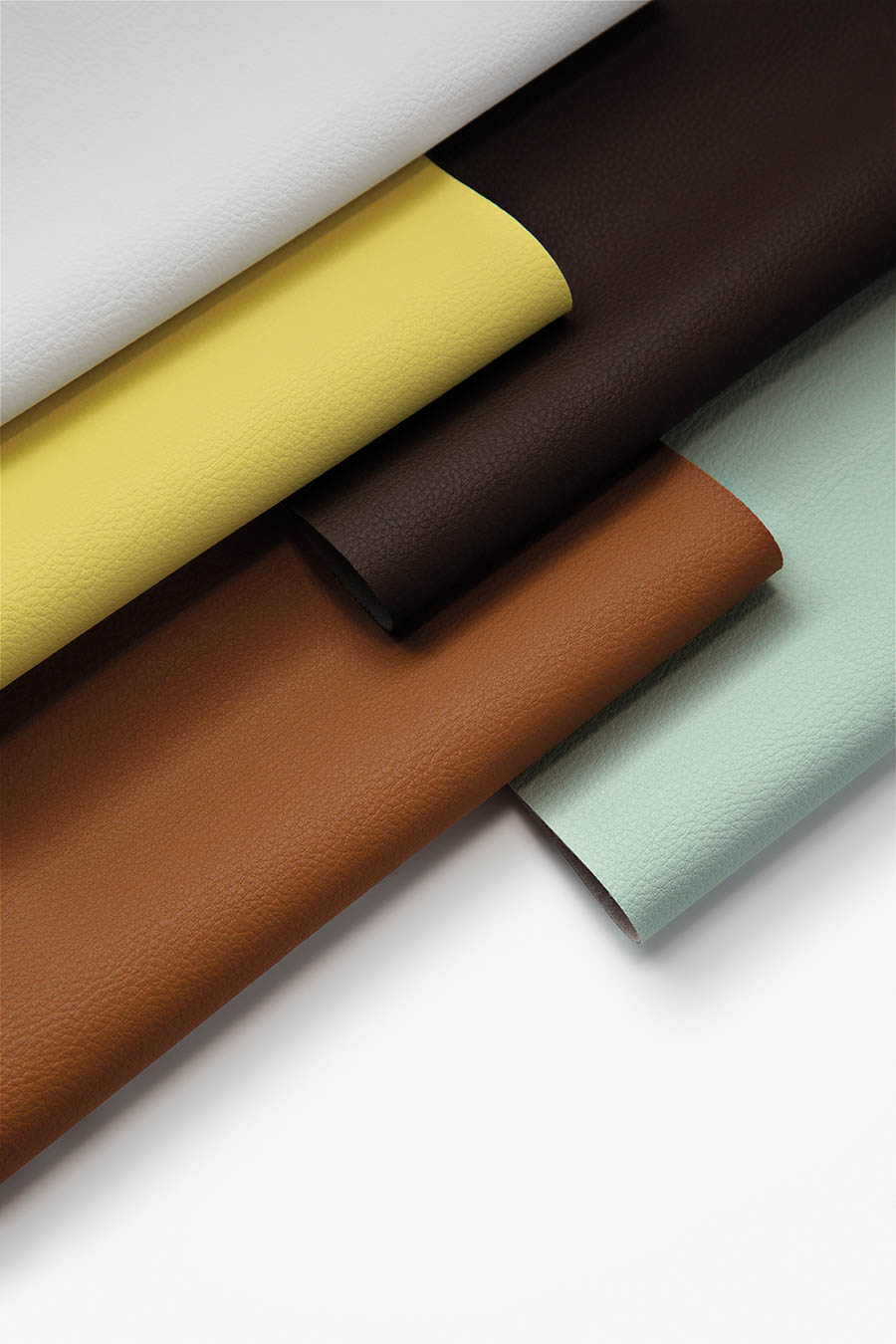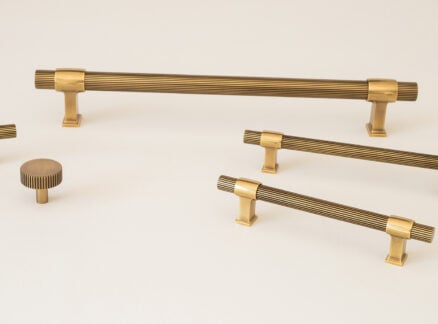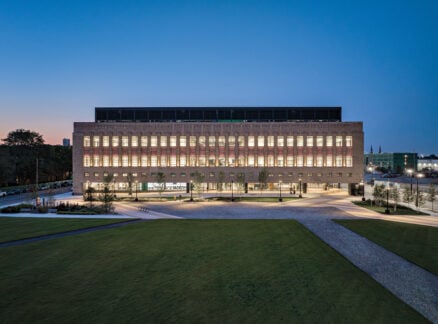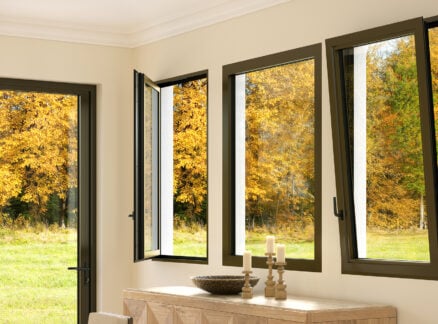
October 7, 2020
From Production to Recycling, Vinyls Become More Sustainable
One of the most widely used plastics in the world, vinyl is made with some concerning ingredients, but safer and greener alternatives are on the horizon.

“Polarizing” is a suitable term for vinyl. It’s one of the most widely used plastics in the world, but a phalanx of environmental and human health organizations points to the ways in which its production and disposal can cause harm. Its value-based performance is undeniable, which is perhaps why it has remained so in-demand (millions of euros have been spent trying to find alternatives for its use in blood bags to no avail) and it still reigns supreme in house siding, pipes, cable sheathing, and a host of other products. In use, it offers the greatest durability, cleanability, and value of any plastic on the market.
INNOVATIONS AND CONCERNS
One of the biggest concerns about the use of flexible PVC in interiors is phthalate leaching. That has largely been overcome by the replacement of these chemicals of concern with plasticizers from renewable resources such as vegetable oil, cardanol, vegetable fatty acids, glycerol, and citric acid. However, there currently seems to be no way of producing PVC without some use of toxic chemicals like mercury, fluorinated polymers, and organotins. Vinyl chloride, a carcinogenic gas at ambient temperature, is the basis for the solid and noncarcinogenic polymerized PVC. Good manufacturing methods can keep all of these out of the environment, but that requires a high level of oversight.

ALTERNATIVES
Polyurethane has overtaken PVC as the go-to performance-coated fabric in furnishings but has yet to do the same for the flooring and wallcovering markets. PVC is still the gold standard in flooring, with VCT and LVT solutions. However, a collaboration between the Ecology Center, Safer Chemicals Healthy Families, the Environmental Health Strategy Center, and Healthy Building Network forced big retailers to remove the problematic phthalates from their VCT and LVT products over a three-year period from 2015 to 2018. In wallcoverings we’ve seen the rise of TPO (thermoplastic polyolefin), which has a relatively “clean” chemistry with few concerns during production or disposal. Silicone has also broken through in the upholstery fabric market, with outstanding heat and chemical resistance, as well as excellent durability.
END OF LIFE
The dioxin emissions from burning PVC mean that waste-to-energy options require high-quality exhaust control. One can make PVC biodegradable by the addition of certain chemicals that make the resin more palatable to microbes, but this requires specific conditions to work effectively. In the EU, recycling has become a major initiative. VinylPlus, a new program in the European PVC industry, has mediated between recyclers and converters to recycle 0.77 million tons in 2019, with even more planned for 2020. But this is only a fraction of worldwide annual production and does not effectively address the fact that many PVC companies will not use recyclates owing to concerns about contaminating their product with phthalates from older sources.
You may also enjoy “Understanding Polyester Alternatives”
Would you like to comment on this article? Send your thoughts to: [email protected]
Register here for Metropolis Webinars
Connect with experts and design leaders on the most important conversations of the day.





